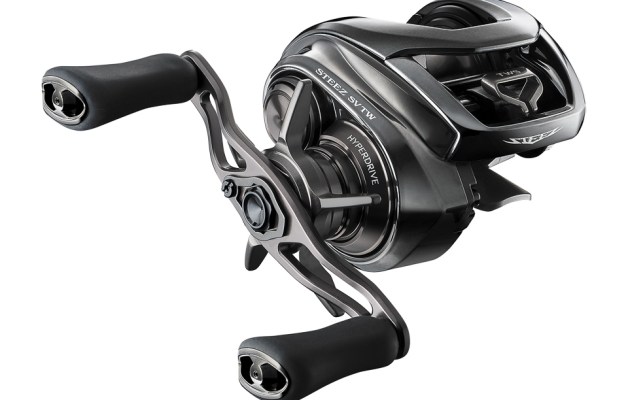
With the 2013 International Convention of Allied Sportfishing Trades (ICAST) upon us, all manner of buzz is surrounding the fishing industry. Each year there are numerous advances in baits, boating and technology, and this year, like those in recent memory, much of the hubbub is about advances in sonar and GPS technology.
Touchscreens abound, we can now see in front of us thanks to Humminbird’s 360 Imaging, and there’s a new kid on the block. Well, actually the “new” kid has been around, but he’s just now sticking his feet into fresh water.
Elite Series pro Bernie Schultz was turned on to Raymarine’s electronics by saltwater guide and former Bassmaster Tour pro Ray Van Horn. Schultz saw the images the little unit could produce and wanted in on the action. The tour veteran met with the Raymarine folks at the Miami Boat Show in 2012.
“I’d never seen a unit with such great clarity and accuracy before, and I’ve run everything,” he said. “Sometime the images on my bow and console units wouldn’t jibe and that had always bothered me. I’d see one thing up front, and it’d look different on my rear unit. The Dragonfly’s accuracy and detail is what sold me on the product.”
Larry Rencken, Raymarine’s VP of Sales, says that much of the Raymarine Dragonfly’s accuracy and picture can be credited to the unit’s unique sonar pulse rate, which is called CHIRP.
“Rather than emitting a single ‘ping’ on a single frequency, the Dragonfly sends multiple pings on lots of different frequencies, which gives us the photo-like image you see,” he says. “Also, since there are so many pulses going on, you can get a crystal-clear picture while traveling at faster speeds, say 15 or 20 mph whereas you need to be going 5 or slower with traditional units.”
The Dragonfly unit also has an elongated transducer that offers a standard 25-degree cone of view for regular 2-D sonar views, but a side-looking 60-degree view is standard. Want to cross-reference one image to the other? No problem, just stack them on top of each other in split screen.
“Another key design point of the Dragonfly was ease of user interface. What our research told us was that most guys want to get to where they’re going, and then fish. They don’t necessarily want to sit there playing with their sonar to get to the right screen before they make a cast,” Rencken says. “There are two buttons and a toggle. That’s it. It’s very intuitive.”
Simplicity has been ratcheted up across the board, with Lowrance debuting touchscreen units. Schultz says that the simplicity of the Dragonfly is amazing, but what is even more impressive is the durability of the units.
“The interface is not overwhelming or intimidating. Plus, Raymarine is the go-to brand in saltwater. If these things can take the saltwater environment, they can take anything freshwater can dish out,” he says. “All the features of the Dragonfly are great for a unit costing $1,000. But I think the best part about it is that you get a rugged unit with a screen that’s almost 6 inches across with side-looking sonar for $649. That’s unheard of. Considering the detail and the versatility of the unit and the fact that you get GPS and hi-resolution underwater scans, the price tag is remarkable.”
Navionics Gold mapping is also available for in-depth contour lines.
Looking even further ahead
Typically we don’t report on rumors, but an email from Kevin VanDam told us that Humminbird’s 360 Imaging will now look even farther in front of the boat. How is that possible? The engineering whiz kids at Humminbird found a way to put that fancy rotating transducer puck on the trolling motor. Stay tuned to Bassmaster.com for more details on this and all the latest gizmos and gadgetry from ICAST 2013.




